If you prominently ride on the road and are interested in getting into mountain biking or want to give it a try, we've got the basic things to know and skills to work on to get you started. To provide the mountain biking expertise, we enlisted the help of multiple 24-hour solo Australian national and world champion, Jess Douglas.
The great thing being a road cyclist is you have a big head start with a solid foundation of fitness, only requiring some technique and skill development to become an accomplished mountain biker. And the best part is the skills are transferable and will make you a much better road rider in the process. Our full-blown roadie editor, Adam, hit up the flowing trails of the Otway Odyssey in Forrest, Victoria, to develop his skills.
Getting started
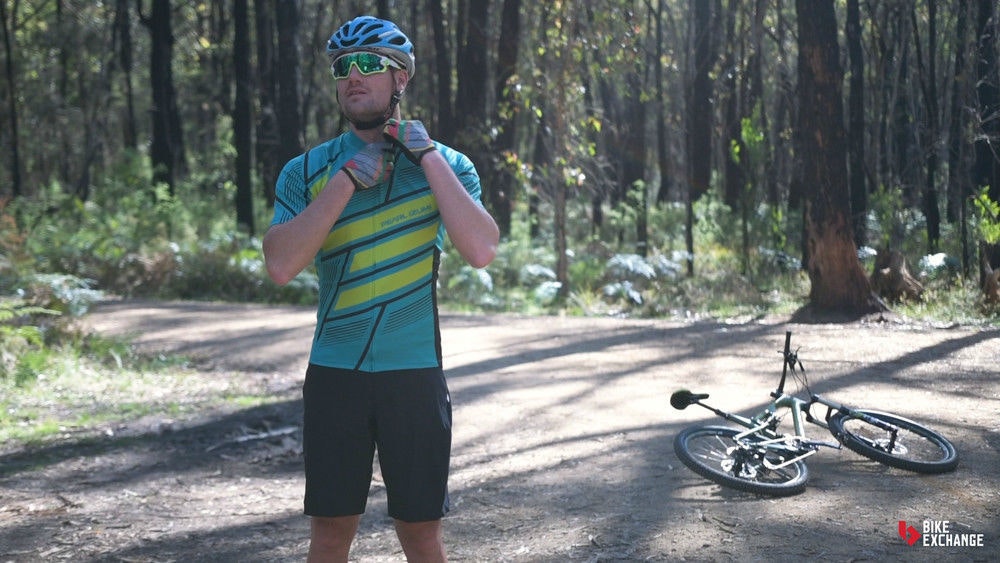
A perceived barrier for many is the need to buy new equipment. The good news is aside from a the obvious mountain bike, much of what you wear on the road can be used on the trails.
Starting from the top, road bike helmets are more than suitable for mountain biking, with many mountain bikers using the same helmet for both. Some riders prefer 'enduro' style helmets which cover a little more of your head and downhill riders will wear a full face helmet for extra protection but a road helmet is more than fine for most riding. Another option for dedicated downhill riders is body armour but it's not something beginners need to concern themselves with... yet!
Riding kit remains largely the same, lycra is equally at home on the trails, although shorts and more relaxed jerseys is common in mountain biking. This primarily comes back to comfort and the reduced emphasis on aerodynamics as speed on the trails isn't as high as on the road.
Gloves are of course worn and most of the time in the form of full finger gloves which prevent your knuckles getting cut up when riding through bush land, they also provide good protection for your hands if you were to fall.
Your sock game still needs to be strong and the only recommendation is to steer clear of white. Needless to say, riding through mud, dirt, sandy paths, fire road and rough single track, they won't stay white for long.
If you plan on riding long distances a hydration backpack might be applicable but many mountain bike parks have ride options that are close enough to the start and so a single bottle can be enough.
Shoes, cleats and pedals are where the most change occurs. In order to cope with the muddy trails, mountain bike specific pedals shed mud and so won't get clogged up like a road pedal would. They are also smaller and dual sided, allowing you to clip-in either side, making it much easier to do so in a hurry. Mountain bike specific shoes are easily recognizable as they have a raised platform on the outer sole to make walking easier while making it harder for mud to accumulate in the cleat. To further improve clipping in they have grooves which track the pedal straight into the cleat. If starting out or not keen on spending too much, a platform pedal is the best way to go, these work with any sports or skate shoe and your foot just rests on top.
Body Position
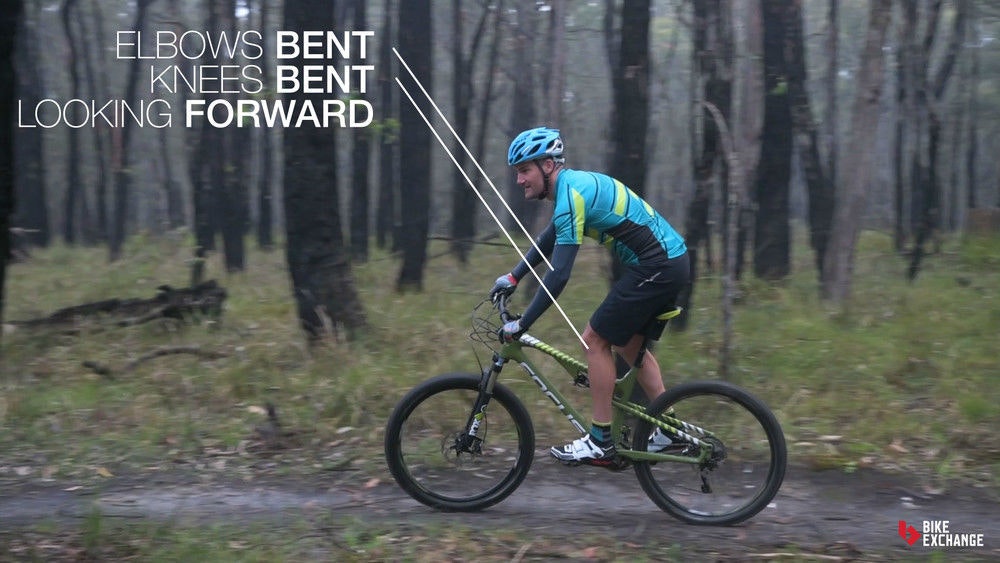
The most basic thing to get right when moving from road cycling to mountain biking is body position on the bike. Be aware of the changes between the two bikes, mountain bikes have wider handlebars, longer wheelbase, lower gears, slacker headtube angle, large knobbly tires and suspension. These changes will heavily influence your riding position and how the bike feels, handles and performs. For more on mountain bikes check out our ultimate guide to buying a mountain bike.
On a road bike, you are seated and looking forward in a fixed position, for mountain biking that position and thinking needs to change. On a mountain bike, you want to be far more dynamic, moving to adjust to the trail and spend more time out of the saddle. Jess advises the best position is known as 'the Attack position', which involves having your elbows wide and high, bum raised off the seat with your pedals level, knees slightly bent and your vision forward. In this position, you can easily absorb bumps along the trail and make quick adjustments.
Get into the 'Attack' position!
This position is most important for faster downhill sections where you have to make quick decisions and adjust on the fly. Pedaling at this time will cause your body to bob up and down, which will affect your vision and balance. In this scenario it's best not to pedal, instead, maintain the attack position with your vision cast far forward and your knees and elbow bent, ready to absorb whatever the trail throws at you.
Vision
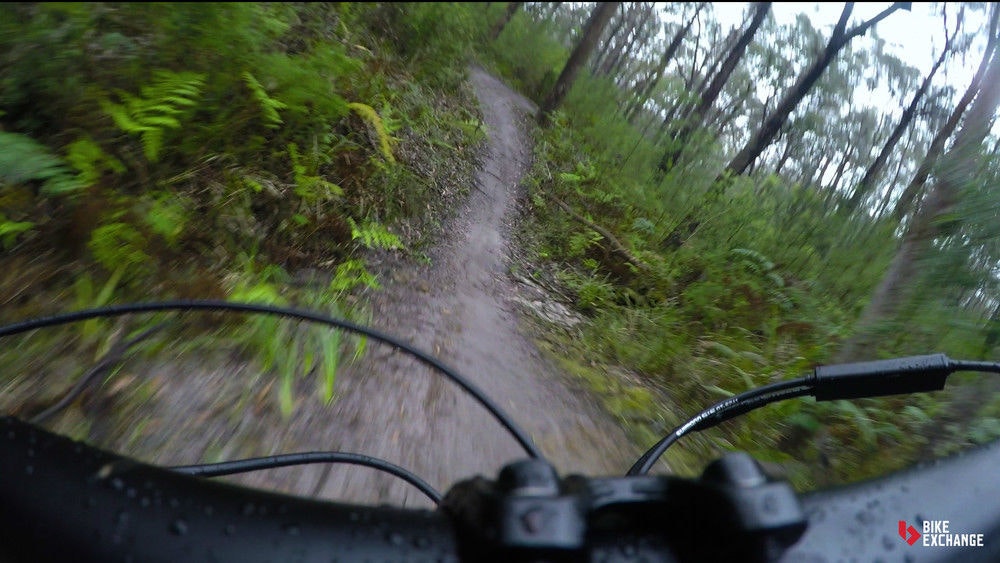
Vision is the next key technique to work on. On the road bike, you are almost always looking straight forward with little need to scan around aside from checking for traffic or watching out for potholes, on the mountain bike, the opposite is true. You need to be constantly scanning your environment for obstacles, trees and deciphering the best line to take through corners.
It's often said wherever you look, that's where you'll end up, which is mostly the case for mountain biking. If you stare down a tree on a descent, it's highly likely you'll end up hitting it. So instead of focusing what is right in front of you, or staring a meter ahead of your front wheel, cast your gaze further down the trail for what is approaching. Your front wheel will follow and as long as you maintain the attack position, you can absorb and clear any obstacles. The faster you are travelling the further ahead your vision needs to be, so to begin with, keep the pace controlled and only go as fast as you can process what you are seeing ahead.
Momentum
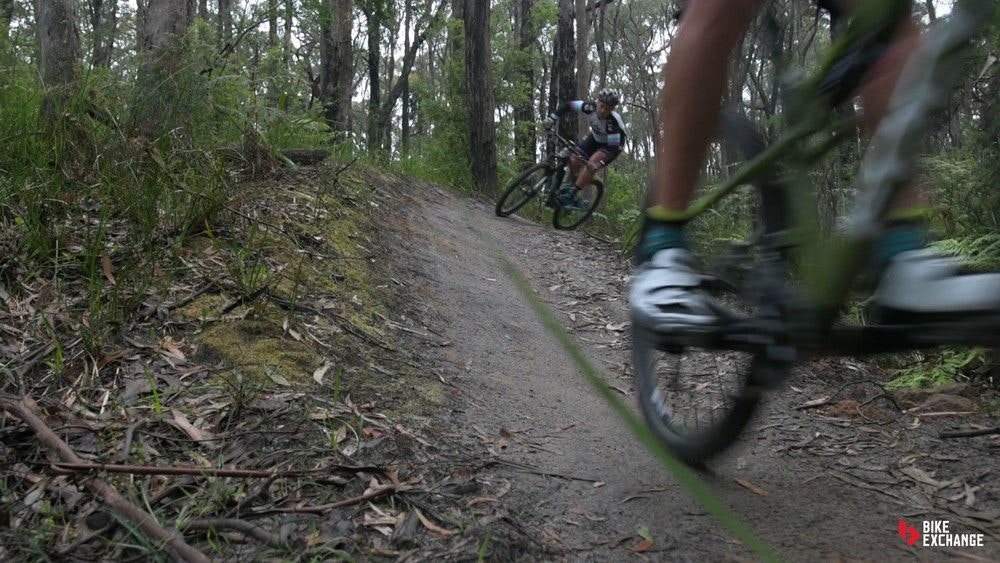
Once you have the attack position mastered and cast your vision along the trail ahead, you'll start to develop some momentum and 'flow'. When you are in the flow, everything seems easy and you aren't forcing things. So with that in mind, the next technique of maintaining momentum becomes all important.
Jess talks about flow as when everything comes together, almost like a Matrix moment when you start seeing everything in code.
Often if you pedal, you offset the balance you have whilst in the attack position. Pedaling adds momentum that you potentially can't handle, which leads you to grab a handful of brake and your flow is gone. So don't be too eager to pedal hard through sections or hit the brakes, instead try to feel what the trail is doing, pick good lines through the corners and keep you speed as steady as possible. You'll find on sections that you can simply move your weight back and forward, and drive the bike with your hands to gain and maintain momentum, as we did on the berms (banked corners) of Mariners run.
Being able to maintain your momentum will also save you a lot of energy. If you are constantly pedaling too much or braking too hard, you have to build your speed each and every time, opposed to carrying speed which will require less energy, leaving you fresh for climbing and faster flat sections.
Weight Transfer
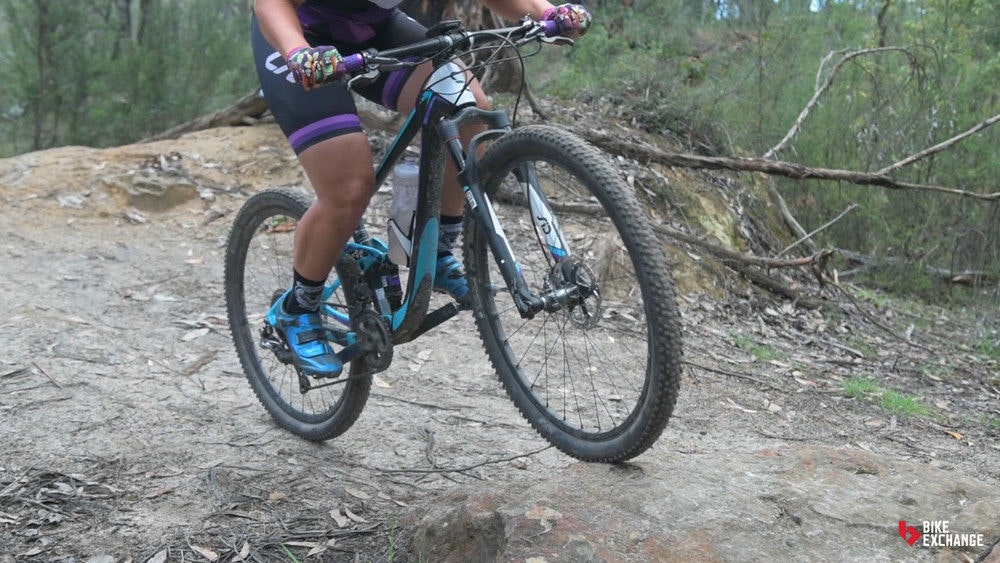
In order to have a smooth ride over bumpy trails, weight transfer is key. Depending on what confronts you, shifting your weight to make the front or back wheel 'light' becomes paramount. For example, if your weight is over the front wheel when approaching an obstacle, the jolt from hitting it will be far greater than if your front wheel was light and your weight was back. It also makes it easier to lift your front wheel if your weight is back. When you begin to jump to clear obstacles, this weight shift becomes even more important. So when we refer to being dynamic on the bike, this is what we mean.
Weight transfer is not only important for clearing obstacles, it's also important for climbing steep gradients. When climbing, it pays to have some weight over the front wheel to prevent it from rising and drifting all over the path. If the gradient is steep, it's also important to remain seated so that your rear wheel has enough traction to grip and drive up the hill.
Flow
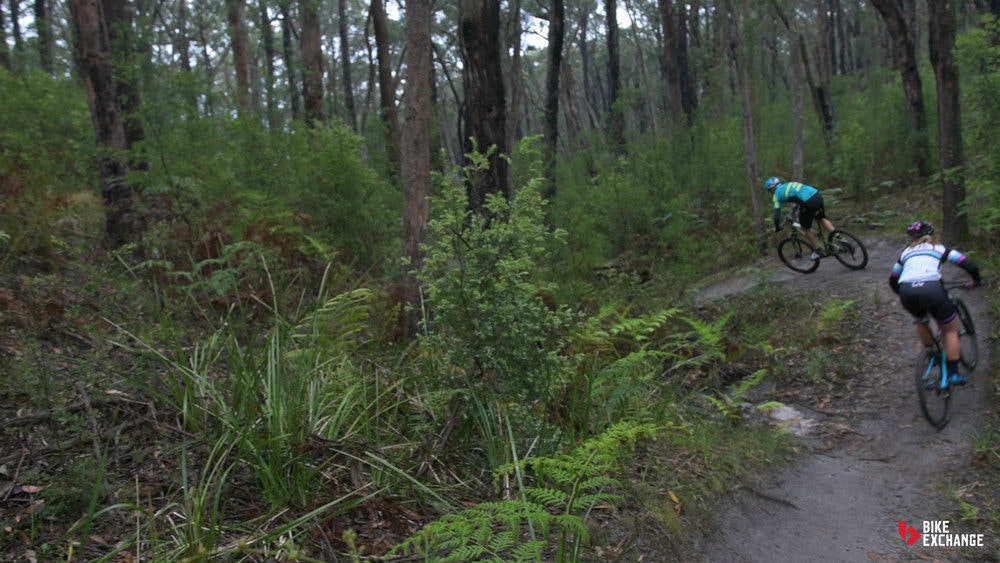
These techniques are applicable in all situations, so instead of trying to 'jump a log' or 'bunny hop', try to use each of these techniques in each scenario that you face on the trails. Ensure you are always dynamic on the bike, constantly shifting your weight, looking far ahead, in the attack position through fast sections, and always be ready to adjust to what the trail presents you with so you can maintain momentum.
When you have everything working at once, there is flow and when there is flow, riding your mountain bike is like a meditation.
And the best part of all this is the techniques you are developing on the mountain bike will make you a far better road rider. Your balance will improve, you'll become more dynamic, your vision will be better and your cornering and bunch skills will make you a faster and safer rider.
Special thanks to Jess Douglas and the team at Rapid Ascent for helping us put this piece together.
Follow BikeExchange: Email | Facebook | Twitter | Instagram | YouTube | STRAVA



